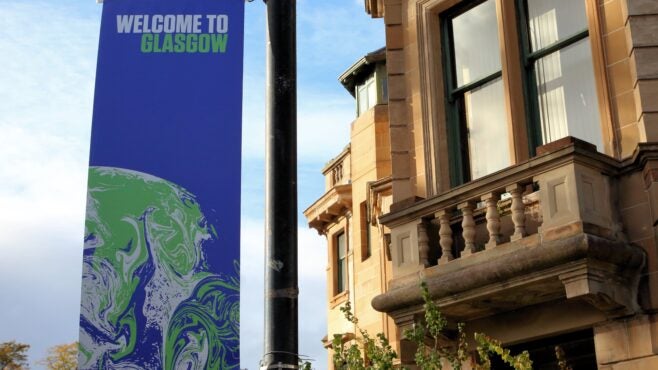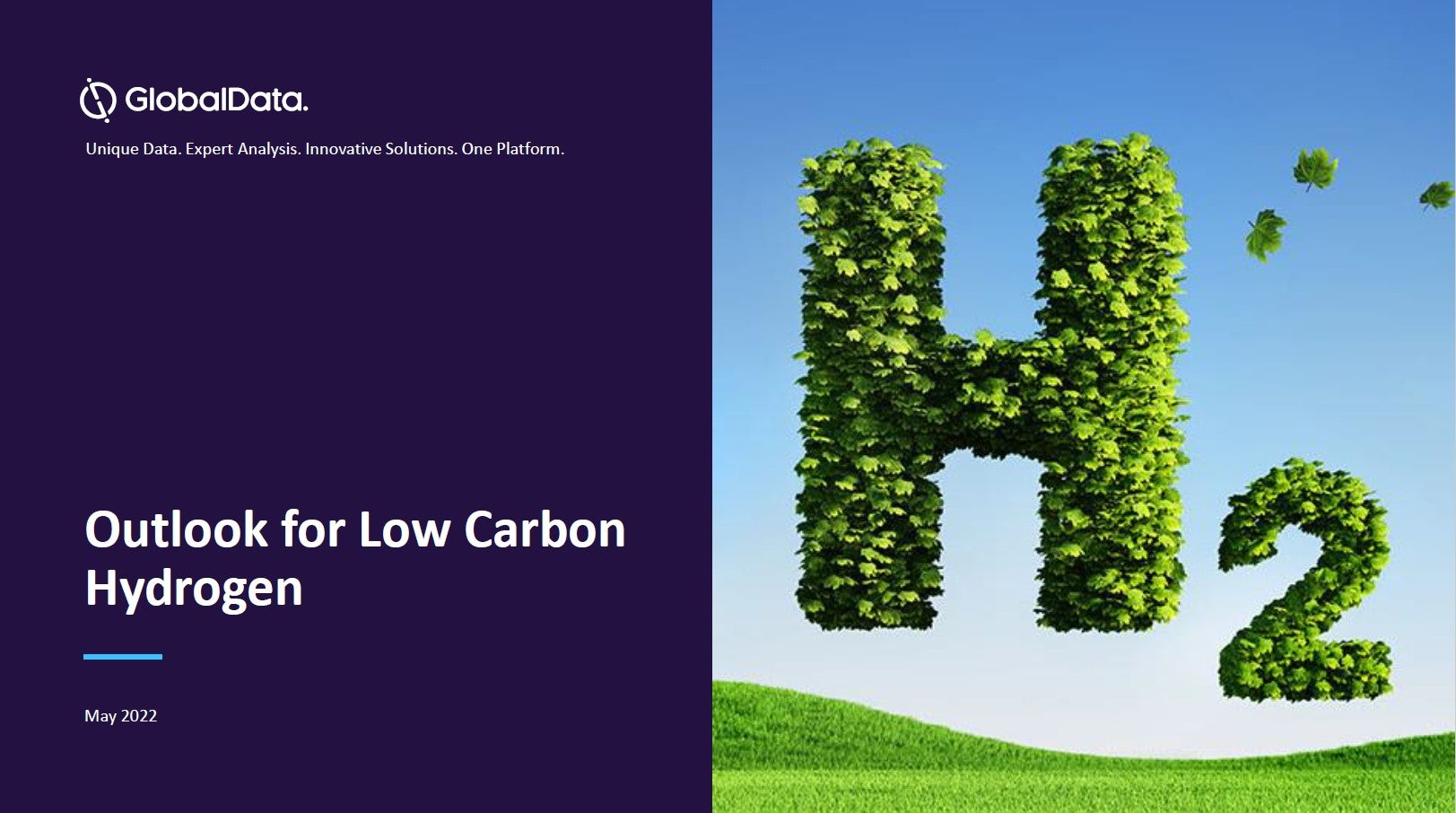European leaders are proud of their record on climate change. EU greenhouse gas emissions were reduced by 24% between 1990 and 2019, while the economy grew by 60% over the same period. Introducing the bloc’s ‘Fit for 55‘ climate and energy package earlier this year, European Commission President Ursula von der Leyen said “Europe walks the talk on climate policies”.
However, some believe the 55% greenhouse gas emissions reduction target for 2030 is not enough to cover Europe’s contribution to climate change. In addition to doing more to reduce its own emissions, Europe could also do more to help the rest of the world decarbonise. Climate change is a global problem and while Europe’s emissions have declined significantly since 1990, it is the only continent where this has taken place.
How well do you really know your competitors?
Access the most comprehensive Company Profiles on the market, powered by GlobalData. Save hours of research. Gain competitive edge.

Thank you!
Your download email will arrive shortly
Not ready to buy yet? Download a free sample
We are confident about the unique quality of our Company Profiles. However, we want you to make the most beneficial decision for your business, so we offer a free sample that you can download by submitting the below form
By GlobalData
Glasgow is set to welcome leaders from Europe and the rest of the world on Monday for COP26. (Photo by Philip King via Shutterstock.com)
Ahead of COP26, reports of intense lobbying from some climate laggards suggest there remain swathes of the world uncommitted to real climate action. In fact, data shows the gap between Europe’s climate achievements and those of the rest of the world is in many cases becoming more pronounced.
To understand this divergence, take one aspect of the energy transition: electrification. “As the backbone of the modern economy, electrification is not only vital for unlocking the structural shift towards a climate-safe world, but also for enabling sustainable and equitable economic growth and development in the countries of the Global South,” says Maria Pastukhova, from think tank E3G.
[Keep up with Energy Monitor: Subscribe to our weekly newsletter]
In 2020, 27GW of new wind and solar power came online in Europe. This exceeded the increase in electricity demand from electric vehicles and heat pumps, reported Jan Rosenow earlier this year for Energy Monitor. Going forward, analysis by NGO Ember shows EU member states plan to almost double renewable electricity generation by 2030, mostly from wind and solar, for a total of approximately 800 terawatt-hours (TWh) of new renewable generation.
European electricity demand is back up to where it was pre-pandemic, but with renewables providing a greater share of power, emissions are now 12% lower.
Outside Europe, though, the story is different. Globally, despite record renewable additions, electricity demand growth is set to outpace the roll-out of renewables in 2021 and 2022, estimates the IEA in its latest electricity market report. Coal continues to make up the majority of new additions that are not met by renewables, followed by natural gas.
Electrification is not yet a climate winner in many parts of the world – and this poses a major problem given how so many decarbonisation strategies rely on access to clean power.
Bringing down the cost of capital
Offering encouragement for developing countries to decarbonise is one of the purposes of big conferences like COP26. This is about more than providing the promised $100bn a year in climate finance. Financing and investment scenarios in the Global South are vastly different from in the West. European countries have both the financial capability and arguably, given their colonial histories, an obligation to help.
For poorer countries to receive renewables investment, “[they] need a really reliable guarantee of payment, and this is tricky to get hold of”, says Wayne Keast, a managing partner at Inspired Evolution Investment Management, a private equity firm specialising in funding African solar energy projects.
Power purchase agreements, which are often used to finance bigger renewables projects, including solar parks, can be complicated for an immature market to manage.
“When governments are less sophisticated, it takes longer to negotiate and it pushes up costs,” says Keast. “Governments might demand solar power at a price typically seen in a more reliable solar power nation like Spain, which is usually not feasible. After negotiations go past a certain point, the return risk profile changes and it is not worth investing.”
Wealthy governments in Europe could direct their money spent by bilateral and multilateral development banks – which invest tens of billions around the world each year – to prioritise clean energy projects. Instead, data shows Western public finance has continued to prioritise fossil fuels in the years since the Paris Agreement.
By pushing public finance institutions to avoid fossil fuels, governments would give a clear signal to private companies that the era of lucrative oil and gas projects in Africa is over.
Recent research from NGO Oil Change International shows some 36% of not-yet-approved new oil and gas projects in Africa are owned by European companies, followed by 33% African and 15% Asian ownership. European oil majors Total, Eni and BP – all companies which have committed to net zero – took up three of the top four spaces for companies investing most in new oil and gas in Africa.
Earlier this year, a Dutch court forced Royal Dutch Shell to increase its climate targets. European countries could do more to hold their companies to account, and send clearer policy signals that the only path forward is the sustainable one, rather than one that may exacerbate the risk of stranded assets in the Global South.
Greening infrastructure and finance
For more than a decade, one of the most accessible ways for developing countries to finance their energy systems was through China’s Belt and Road Initiative (BRI). The BRI saw China finance some 240 coal-powered plants across Asia and Africa, as well as some new renewable energy facilities. Research shows that Chinese loans have often involved opaque contracts that leave low-income countries in a debt trap and beholden to Beijing.
Recently, Western leaders have began making noises about offering an alternative programme with a focus on green infrastructure. At June’s G7 Summit, leaders said they were initiating a global infrastructure programme, the 'Build Back Better World' partnership, which was described by the US as “values-driven, high-standard and transparent”. The EU has also made noises about delivering an “external element of the Green New Deal”, while von der Leyen said Europe needed to become a “more active global player” during her State of the European Union address in September.
Competition could well bolster the roll-out of green infrastructure worldwide, as China, the US and the EU all strive to get ahead, but beyond grand ambitions to profit from investment overseas, there is a more immediate financing vehicle European leaders should commit to.
As has been widely reported, rich nations made a pledge 12 years ago to provide $100bn a year to less wealthy nations by 2020 to help them mitigate and adapt to climate change. That pledge is unmet, despite being equivalent to just 0.0007% of the EU’s annual GDP.
A new financing plan released this week would see the target only met in 2023 – which is likely to be too little, too late. Climate finance is in short supply nearly everywhere, but the problem is particularly acute in the Global South. Developing and emerging economies account for two-thirds of the world’s population, but just one-fifth of the investment in clean energy, says the IEA.
If Europe’s leaders are serious about both tackling climate change and assuming a larger geopolitical leadership role, COP26 should be taken as a chance to look beyond achievements at home and take more action abroad. The time for platitudes is behind us. Europe has both the financial clout and popular backing to lead the way on climate change by showing it understands this as a global problem, rather than only a domestic policy priority.




Related Company Profiles
BP Plc
Eni SpA